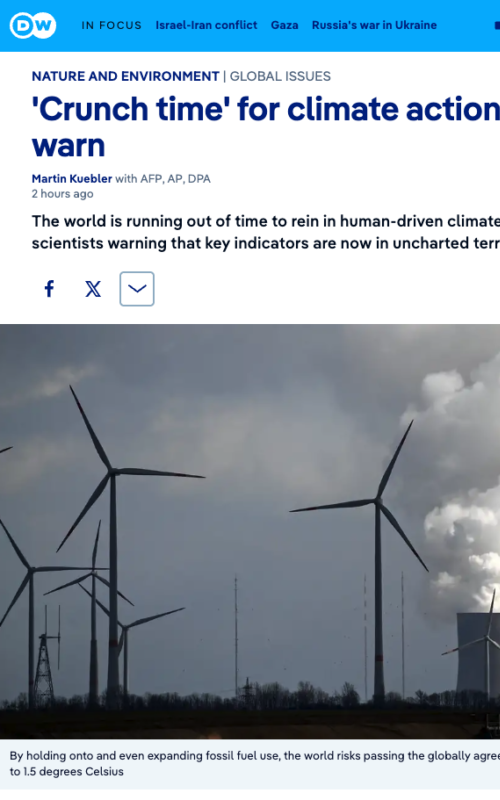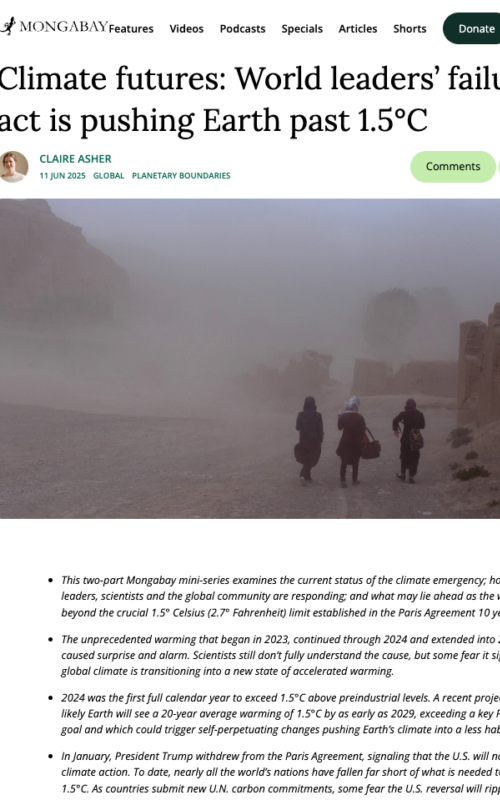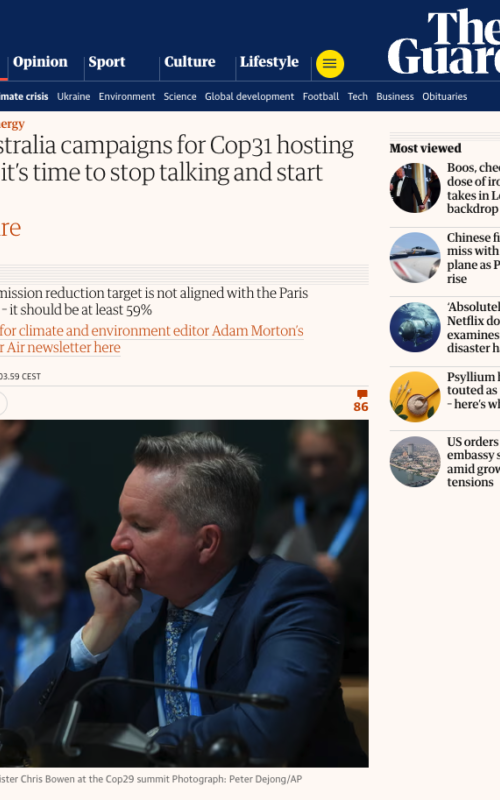Media coverage
Share


Anadolu Agency
Bill Hare told Anadolu that Germany has failed to move quickly enough, jeopardising its ability to meet the EU’s 2030 climate and energy framework.

Público
"We're close to 1.5°C of global warming, and Europeans are already suffering from record heat. That's why, as we approach the Paris Agreement threshold, it's so important that people understand the dangers associated with exceeding that threshold," Bill Hare told Público.

Inside Climate News
The urgent message was delivered to Brazilian officials during annual UN climate talks in Bonn by Bill Hare, and includes new warnings about an Amazon rainforest tipping point.

CNBC Indonesia
"Because of the variety of natural resources that countries have, if they pool resources by connecting cross-border energy systems, all of those systems become much more efficient," Prof. Dr. Michiel Schaeffer told CNBC Indonesia.

Deutsche Welle
Bill Hare, CEO of think tank Climate Analytics, said Thursday it was "inevitable" that the world would breach the 1.5°C limit in around five years "unless emissions are reduced quickly".

ABC News
Analysis by climate science policy institute Climate Analytics released this month estimated about 87 per cent of emissions linked to the North West Shelf between 2024 and 2050 were scope three.

FT Sustainable Views
The recent case against utility RWE shows the ‘polluter pays’ principle could become a reality.

Mongabay
The last round of nationally determined contributions (NDCs), submitted in 2021 by the world’s nations, put Earth on course to warm by between 2.6°C and 2.8°C by century’s end, according to the Climate Action Tracker.

The Guardian
Our latest Climate Action Tracker Australia profile shows the government’s efforts to cut emissions are still rated “insufficient” – the 43% emission reduction target would need to be at least 59% to align with the Paris agreement.
